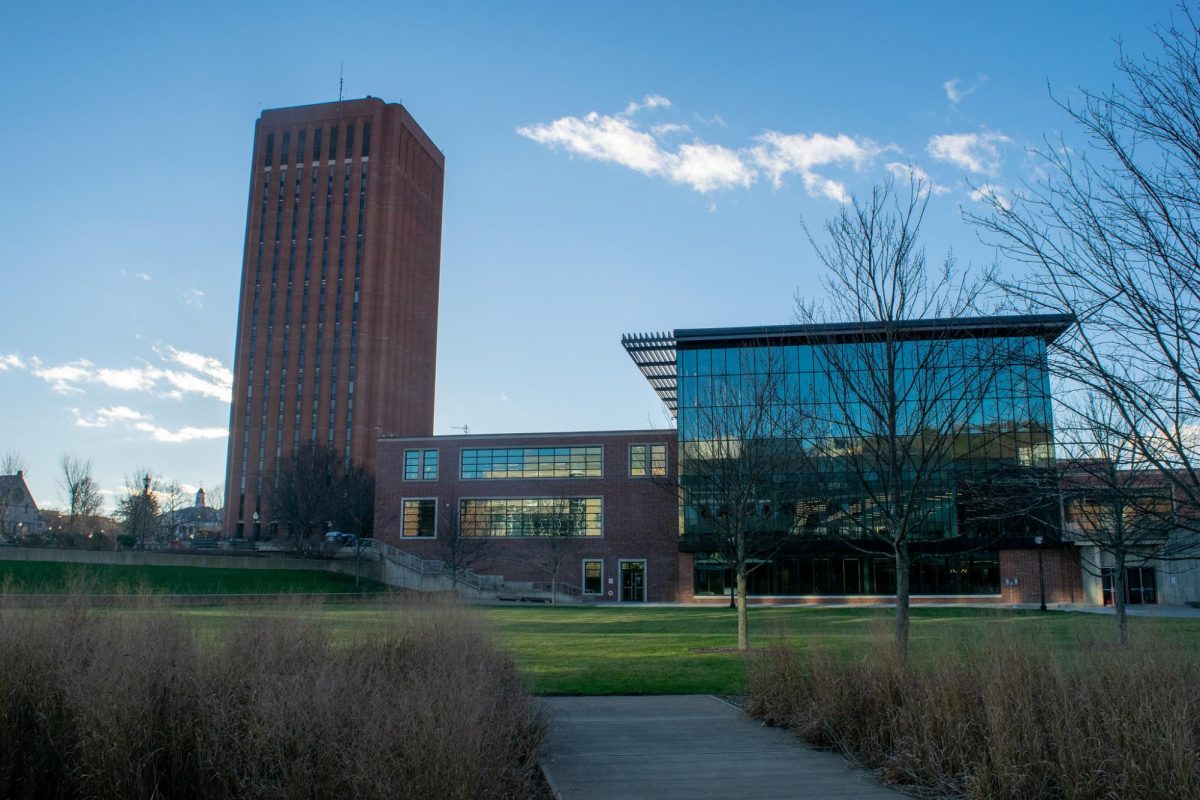
So far, approximately 4,546 people have died from Ebola, and with one sick person recently falling through gaps in the United States public health system, the future remains unknown. Without a cure, the World Health Organization recently predicted that there could be as many as 10,000 new diagnosed cases of the virus per week by the end of 2014. The Centers for Disease Control and Prevention added the possible worst-case scenario of 1.4 million new cases by Jan. 20 in Liberia and Sierra Leone alone.
But there is good news in the midst of this frenzy. On Oct. 17, Senegal was officially declared Ebola-free, and just three days later the WHO reported the same news for Nigeria. In the United States, after a three week quarantine period, 43 patients who had been in contact with Thomas Eric Duncan, who recently died from the virus, are considered Ebola free, while another 120 remain under monitoring.
Question: How did the virus originate?
Answer: According to the CDC, Ebola first appeared in the Democratic Republic of Congo in 1976, near the Ebola River. The disease quickly spread due to use of contaminated needles in hospitals and personal, close contact with infected people. During that outbreak, 318 people were diagnosed and 280 died – a survival rate of only 12 percent. The current outbreak that began in March of this year has already affected 8,900 people. There are five species of the virus, four of which can cause illness in humans. The natural host of this virus is still unknown, but is believed to probably originate from animals, most likely bats.
Q: How is it spread?
A: Ebola is not spread through air, food or water. The CDC says you can only become infected with the disease after making direct contact with either an infected animal or infected human. The disease is transmitted from human to human through blood or bodily fluids, including urine, sweat, saliva, vomit or syringes that have been in contact with an infected individual. As of now, only mammals have spread the Ebola virus.
Q: So then how did this virus spread to America?
A: There have been eight cases of Ebola treated in the United States, most are patients who were diagnosed with the virus in Africa and were then sent home for immediate treatment.However, on Sept. 30, 2014, the first case of Ebola was confirmed in the United States. The New York Times writes that the patient, Duncan, traveled to Texas from Liberia on Sept. 19, and thus showed symptoms on Sept. 24, days after his arrival in the United States. The patient later died on Oct. 8. Two nurses who were tending to the patient, Nina Pham and Amber Joy Vinson, both would later develop symptoms of Ebola. Pham tested positive for the virus on Oct. 11, a day after Vinson boarded a plane bound for Cleveland. She would later be diagnosed with Ebola, and was only allowed to travel back and forth from Dallas because she did not show any risk at the time for spreading the virus.
However, the CDC believes that there is little risk to passengers who were on board the flight with those who tested positive for Ebola. Ebola is not contagious until symptoms show in a patient.
Q: What are the symptoms?
A: From anywhere between two and 21 days after being infected with the virus, symptoms will begin to appear. These include fever, muscles aches and pains, severe headaches, weakness or fatigue, diarrhea, vomiting, abdominal pain and unexplainable bleeding or bruising. Recovery depends on proper clinical care and the patient’s own immune system.
Q: What is the potential for a wide-scale outbreak in the United States?
A: According to the CDC, very low. The center, along with other organizations, are now working on isolating the infected, contacting anyone who has come in contact with the infected and providing further monitoring of patients when the symptoms progress. The CDC also added that in the past, the U.S. has dealt head on with viruses of a similar makeup to that of Ebola. Five cases of Viral Hemorrhagic Fever, similar to Ebola, have been imported to the US in the past decade and no outbreak occurred.
Q: Is there a cure?
A: As of right now, there is no FDA-approved vaccine or treatment to cure Ebola. However, there are some practices that, if used early enough, can save a patient’s life, including treating other infections if they occur, providing fluids intravenously, balancing the body’s electrolytes and maintaining oxygen and blood pressure levels.
Q: What is being done to stop this from spreading?
A: The CDC is implementing a screening system at five airports that receive 94 percent of the travelers from African countries such as Guinea, Liberia and Sierra Leone. Travelers are checked for a fever and asked questions about their travels and health. CDC site managers will also be deployed to any hospital with patients who have been diagnosed with Ebola, as to protect the public and any health workers.
The CDC also recently updated their protocol regarding the way health care workers treat Ebola patients. After two nurses who worked at Texas Health Presbyterian were diagnosed with the virus, the CDC emphasized the importance of healthcare workers being thoroughly trained with their personal protective equipment, making sure no skin is exposed when the equipment is worn and ensuring that workers are observed by a trained monitor when the equipment is put on and taken off.
Q: How does this affect UMass?
A: University of Massachusetts Health Services recently sent out an email to the student body saying UHS, “continues to collaborate with key departments at UMass Amherst, health representatives from the Five Colleges, hospitals, area health officials and emergency response agencies to prepare for the unlikely possibility of an Ebola exposure in our community.”
According to the email, no faculty member, staff or student has returned from any of the areas that have been affected by Ebola. Anyone who has traveled from Liberia, Sierra Leone or Guinea or thinks they have been exposed to the virus is advised to call UHS at (413) 577-5000 before going to their healthcare facility.
Currently, UHS is monitoring the latest regional, national and global news and is following the guidelines of many organizations devoted to controlling the potential Ebola outbreak. This includes, according to the email, using the CDC checklist for Ebola symptoms as a screening tool, conducing person-to-person training of necessary emergency equipment and conducting reviews of current plans and procedures at UMass. A fact sheet about Ebola has also been posted to the UHS, International Programs Office and Parent Services website to inform students about the basics of the virus.
Jaclyn Bryson can be reached at [email protected].


















